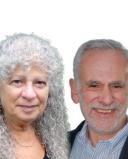Anxiety
Not All “What Ifs?” Are the Same
Understanding your "What ifs?" can guides you to the best way to resolve them.
Updated October 6, 2024 Reviewed by Davia Sills
Key points
- Not all "what if's" are the same.
- Some "what ifs" can be easily verified.
- Some have no answer and can lead to repetitive worry.
- Some are a complete product of our imagination.

The Four Types of “What Ifs?”
First, there are “what ifs” that are plausible but either unlikely or irrelevant now (“What if I become ill?”; “What if I lose my job, even though I’m getting good feedback?”; “What if I stop loving my partner someday?”; “What if my child does not get into this college?”; “What if this plane goes down?”). Many people can accept these possibilities with little or no distress.
But for some people, these thoughts drive avoidance, ruminations, loss of confidence, reassurance seeking, attempts at control, indecision, or other anxious manifestations. People imagine the outcome happening, and then they worry.
Second, there are the “what ifs” about things we simply cannot know (“What if there is no afterlife?”; “What if I am living in an alternate reality?”; “What if I cannot handle some future event?”; “What if I had not moved, how would my life be now?”).
Most people have these thoughts from time to time and move on, knowing they are unknowable and not worth more mental energy. Some people get stuck.
Third, there are “what ifs” that are not based on any observable reality but instead are a product of a hijacked imagination. These “what ifs” develop a catastrophic story entirely out of whole cloth.
They confuse, without evidence, what is a wildly conceivable possibility with a likely probability. And that feeling of probability produces an urgent drive to somehow “fix” or prevent the imagined catastrophe.
(“What if this doorknob is contaminated with a deadly disease, and I kill someone inadvertently by shaking their hand? I can’t shake anyone’s hand”; “What if this test result under my name and date is actually someone else’s? I need to find out absolutely for sure.”; “What if I—suddenly, for no reason—become someone other than the individual I know I am? Perhaps a pedophile or a murderer? I can’t allow myself to have any contact with children or potential weapons.”)
These elaborate, nonsensical products of one’s imagination can be totally absorbing. They can drive actions and magic rituals to avert disaster or avoid what was never avoided before entering the “bubble” of the catastrophic story.
Finally, there are the “what ifs” that are easily verified (“What if she is mad at me for being late?”; “What if I forgot to take my blood pressure pill this morning?”; “What if the rent check never arrived?”).
These are resolved as soon as the facts are checked out. (“She laughed and said, “Actually I was relieved; I was late too”; “No, it’s not there in the pill case”; “OK, I see the withdrawal from my bank account”). This kind of brief worry is not a problem... Unless one does not accept the factual answer. In that case, the “what if” continues, and one keeps on doubting.
This is known as “Yes, I know, but ‘what if’ “and goes like this: “What if she was not being genuine?”; “What if the pill fell to the floor and my dog ate it?”; “What if the bank made a mistake?” These previously verifiable “what ifs” move to category three instantly, as you are hijacked by your imagination and create yet another catastrophic story.
In the first two kinds of “what ifs,” one needs to develop a willingness to allow what we cannot know for sure and proceed to live normally anyway.
Recovery From the Tyranny of “What Ifs”
The goal of recovery is to accept that there is uncertainty surrounding virtually everything, but we cannot lead normal lives with our attention focused on it. Being “sure” is just a feeling, not a fact. We must allow that we cannot predict, control, or be sure of something just because we would like to.
This means taking reasonable risks and facing irrational fears, striving to identify and bypass false alarms. Some anxiety is normal—it is an aspect of accepting doubts as part of living. We live with a functional certainty and not an absolute one.
On the other hand, for the third kind of “what ifs,” the goal of recovery is to resolve the nonsense, which is derived from the doubting process itself.
This means stepping away from absorption in the imagined narrative and resuming an ordinary relationship with reality. We do not have to face uncertainty about perhaps being a latent murderer or possibly having made a mistake in the past that we have no evidence for.
We need to grasp that we made the whole thing up in a compelling story that we are now treating as if it were true.
Unlike the first two kinds of “what ifs”—in which accepting uncertainty is required—we need to dismiss this kind of evidence-free doubting as nonsense—not impossible, but still nonsense. We do not have to accept “maybe yes, maybe no.” We can dismiss the doubt.
Sometimes, it is hard to determine which kind of “what if?” we are having. That is the first step. In generalized anxiety disorder (GAD), most “what ifs” are the first kind.
In obsessive-compulsive disorder (OCD), most “what ifs” are the third kind. Many people have both disorders and, therefore, both kinds of “what ifs.”
In all cases, it is important to examine one’s beliefs about thoughts and one’s relationship with their thoughts.
Here are some false metacognitive beliefs that underlie when happens when passing “what ifs” become stuck. They need to be debunked.
- Thoughts can influence reality.
- If I think something, it must be important, and I should attend to it.
- Thoughts are signals that should not be ignored.
- Thoughts are indicative of my true character or intentions.
- If I imagine something bad, I have a responsibility to prevent it.
- Thoughts can act like magic.
- Doubts are warnings.
- Thoughts that arrive with jolts of fear, guilt, or disgust must be dealt with.
- Irrelevant facts need be included in risk assessment.
Some people will find that their urges to avoid or compulsively respond to their “what ifs” just drop away when they understand their thinking mistakes and habits. They will naturally start behaving more like everyone else, sometimes step by step, sometimes in a burst of insight and relief.
Others do better with a planned exposure regimen where they test out their new beliefs and “face their fears,” gradually overcoming or inhibiting conditioned fear responses.
There is no one path to recovery. Sometimes learning to live with uncertainty is the key, sometimes resolving doubts that have no basis in reality is the key. But understanding how one’s “what if” developed and got stuck reduces bewilderment and suffering.
References
Winston, S., & Seif, M. (2022) Overcoming Anticipatory Anxiety. New Harbinger. Oakland
Carbonell, D., (2016) The Worry Trick. New Harbinger, Oakland.
O’Connor, K., & Aardema, F. (2005). Beyond Reasonable Doubt: Reasoning Processes in Obsessive-Compulsive Disorder. Wiley-Blackwell.
Weekes, C. (1969) Hope and Help for your Nerves. Hawthorne Books. New York




